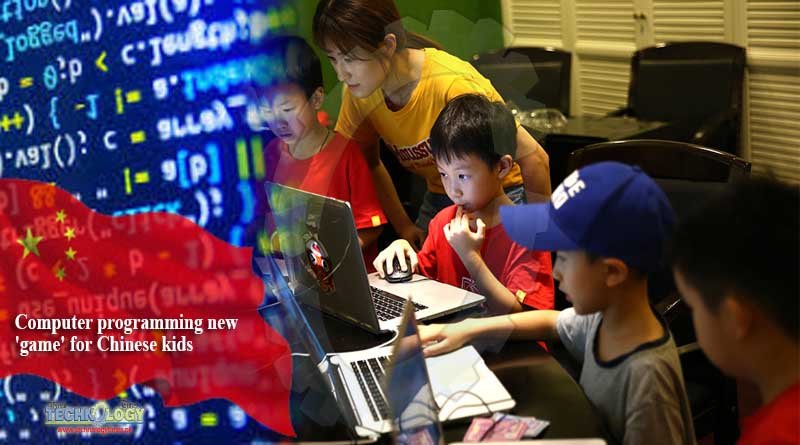The fourth-grade pupil said he would rather stay indoors after a quick lunch, glued to the screen. But Zhixing is not just playing games or surfing the internet – the boy is immersed in a basic computer programming, or coding, lesson. It is an increasingly addictive hobby that his mother completely approves of.
 “I signed him up for coding lessons at a private learning center about six months ago because I thought it might be an important skill that he would need. I’m glad he’s enjoying it,” said Chen, 36, who works in the catering industry like her husband in Beijing.
“I signed him up for coding lessons at a private learning center about six months ago because I thought it might be an important skill that he would need. I’m glad he’s enjoying it,” said Chen, 36, who works in the catering industry like her husband in Beijing.
The mother is one of a growing number middle-class Chinese parents in major cities where the private education sector is racing to fill demand for coding lessons, which are seen as a crucial skill to adequately arm students for the digital age.
The coding industry for Chinese children is worth up to 4 billion yuan ($558 million) and that is forecast to increase about tenfold in the next five years, according to market research and consulting group iResearch.
Major coding training companies accounted for a large portion of Chinese education investment deals last year, raising more than 780 million yuan altogether, according to latest industry figures.
Makeblock, a global educational solutions provider for the Science, Technology, Engineering, Arts and Math fields and a major player in the intelligent hardware sector, is one of the Chinese companies looking to ride the coding wave. The company helps students build robots and carry out programming with self-developed software using tools and toys.
It boasts 8 million users at home and abroad, with more than 25,000 schools tapping its solutions, over 1,600 partners via its various channels and the overseas market forming a substantial part of its revenue.
The company, set up in 2013 and based in Shenzhen, Guangdong province, is focusing on schools, training institutions and families, continuing its involvement in STEAM education via schools through a comprehensive hardware and software combined learning ecosystem, according to its public relations manager Mason Zhong.
Makeblock has robotics products for the 4-to 8-year-old, and 8-to 16-year-old segments, geared toward maker communities and robotics competitions, and it has also rolled out kits targeting children’s coding activities at home, Zhong said.
“The emergence of the Scratch graphical programming language has greatly reduced the coding threshold,” Zhong said.
Scratch, developed by the Lifelong Kindergarten group at the Massachusetts Institute of Technology, helps children to drag and combine code blocks to make a range of programs, including animations, stories, musical instruments and games.
The international coding scene has expanded to cover the children and adolescent markets, Zhong said. Industry figures show that the current market penetration rate for those segments in China is 1 percent, compared with close to 45 percent in the United States and close to 10 percent in the United Kingdom, reflecting the great potential of the Chinese market, Zhong said.